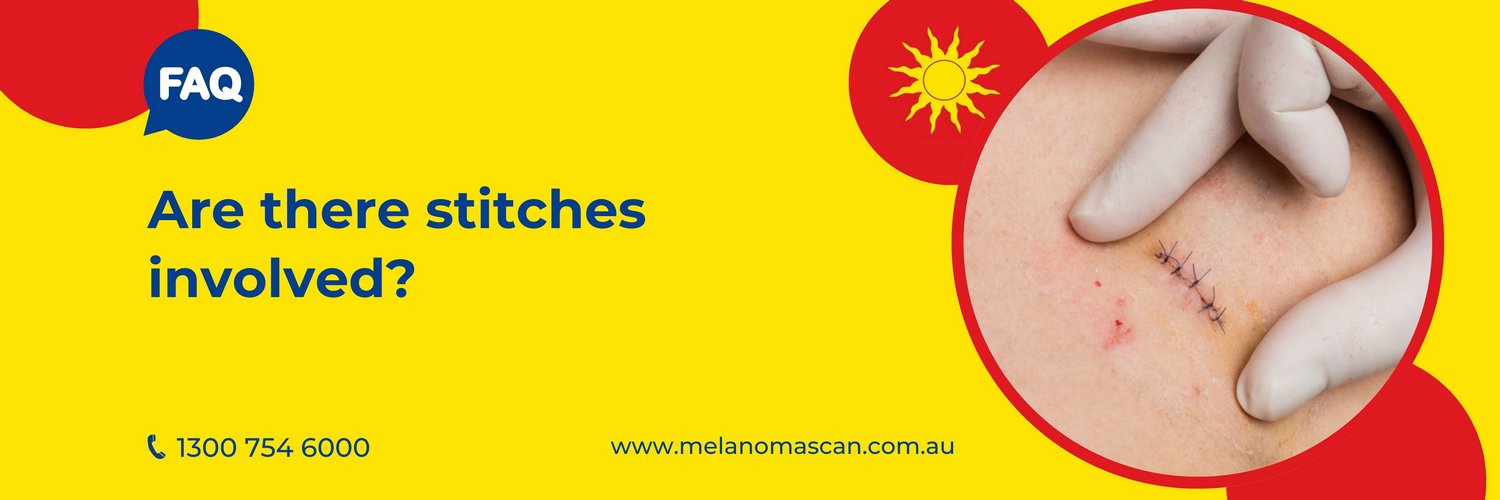Are there stitches involved?
Sutures are used for closure of ellipse excisions, and these need to be removed at 7-14 days, depending on the site. Most are removed at day 7 but lower legs take longer to heal.
Do I need to come back to have the stitches removed?
Deep sutures dissolve by themselves over an extended period of time, however if they poke out through the skin at any stage in the healing process, they are usually removed to allow the wound to close completely.
Shave excisions do not need sutures and heal up like a graze wound with appropriate dressings and wound care.
Melanoma Scan - Skin Cancer Clinic
Understanding the Mole Removal Process
What is mole removal, and why is it done?
Mole removal is a procedure performed to eliminate unwanted or suspicious moles from the skin. It is usually done for medical reasons, such as assessing a mole for skin cancer risk or removing a bothersome or aesthetically unpleasing mole.
What are the different methods of mole removal?
There are various methods of mole removal, including excision, where the mole is cut out with a scalpel, and laser removal, which uses high-intensity light to vaporise the mole. Another method is shaving, which involves using a blade to "shave" off the mole from the surface of the skin.
What is the importance of biopsy after mole removal?
Biopsy post-mole removal is crucial to determine if the removed mole was cancerous or precancerous. It helps in providing information about the nature of the mole cells and guides further treatment if needed.
Scar Management After Mole Removal
How do you care for the wound and scar post-mole removal?
After mole removal, it is essential to keep the wound clean and covered with a sterile bandage. Proper wound care helps prevent infection and promotes effective healing, leading to minimal scarring.
When do the stitches from mole removal usually come out?
The timeline for stitches removal after mole removal varies from patient to patient. Typically, stitches are removed within 1 to 2 weeks, depending on the location of the mole and the healing progress.
What can affect the appearance of the scar after mole removal?
Factors such as the size and depth of the mole, the healing process, and individual skin characteristics can influence the scar appearance after mole removal. Proper wound care and scar management techniques can help in reducing scar visibility.
Healing Process and Mole Removal Aftercare
What is the typical healing time after mole removal?
The healing time after mole removal varies but usually takes 2–4 weeks for the wound to completely heal. During this period, proper aftercare practices are crucial for optimal healing.
What are the recommended ointments or bandages for aftercare?
Ointments like petroleum jelly and sterile bandages are commonly recommended for aftercare post-mole removal. They help in keeping the wound moist and protected, promoting faster healing.
How do we recognise signs of infection during the healing process?
Signs of infection post-mole removal include increased redness, swelling, warmth around the wound, and pus drainage. If any of these signs are observed, it is important to seek medical attention promptly.
Risks and Complications of Mole Removal
What are the potential risks associated with mole removal?
Potential risks of mole removal include infection, scarring, bleeding, allergic reactions to anesthesia, and rare complications such as nerve damage. These risks can be minimised by following proper pre and post-operative care instructions.
Is there a risk of skin cancer recurrence after mole removal?
While the risk of skin cancer recurrence after mole removal is low, regular skin examinations and monitoring for any new or changing moles are important for the early detection of potential skin cancer.
How do we monitor the area for any signs of melanoma post-mole removal?
Regularly inspecting the area where the mole was removed for any signs of melanoma, such as changes in color, shape, or size, is crucial. Any suspicious changes should be reported to a healthcare provider promptly.
Expectations Following Mole Removal Surgery
What can one expect in terms of scarring after mole removal?
The extent of scarring after mole removal varies depending on factors like wound care, scar management, and individual healing responses. Proper care can help in minimising the appearance of scars.
Does the location of the mole impact healing time?
The location of the mole can affect healing time, with areas of the body that experience more movement or friction taking longer to heal. Following care instructions and keeping the wound clean are essential for timely healing.
When should one seek medical attention post-mole removal?
If any unusual symptoms like excessive pain, bleeding, signs of infection, or concerning changes in the wound or surrounding skin are observed post-mole removal, prompt medical attention should be sought.
For further information, please feel free to Contact Us or follow the link to request an appointment by clicking Book Now.


 Prevention Tips
Prevention Tips Early Detection
Early Detection Understanding Skin Cancer
Understanding Skin Cancer Success Stories
Success Stories Lifestyle and Skin Health
Lifestyle and Skin Health Advances in Treatment
Advances in Treatment Community & Events
Community & Events For Families
For Families What's Happening at Melanoma Scan?
What's Happening at Melanoma Scan?